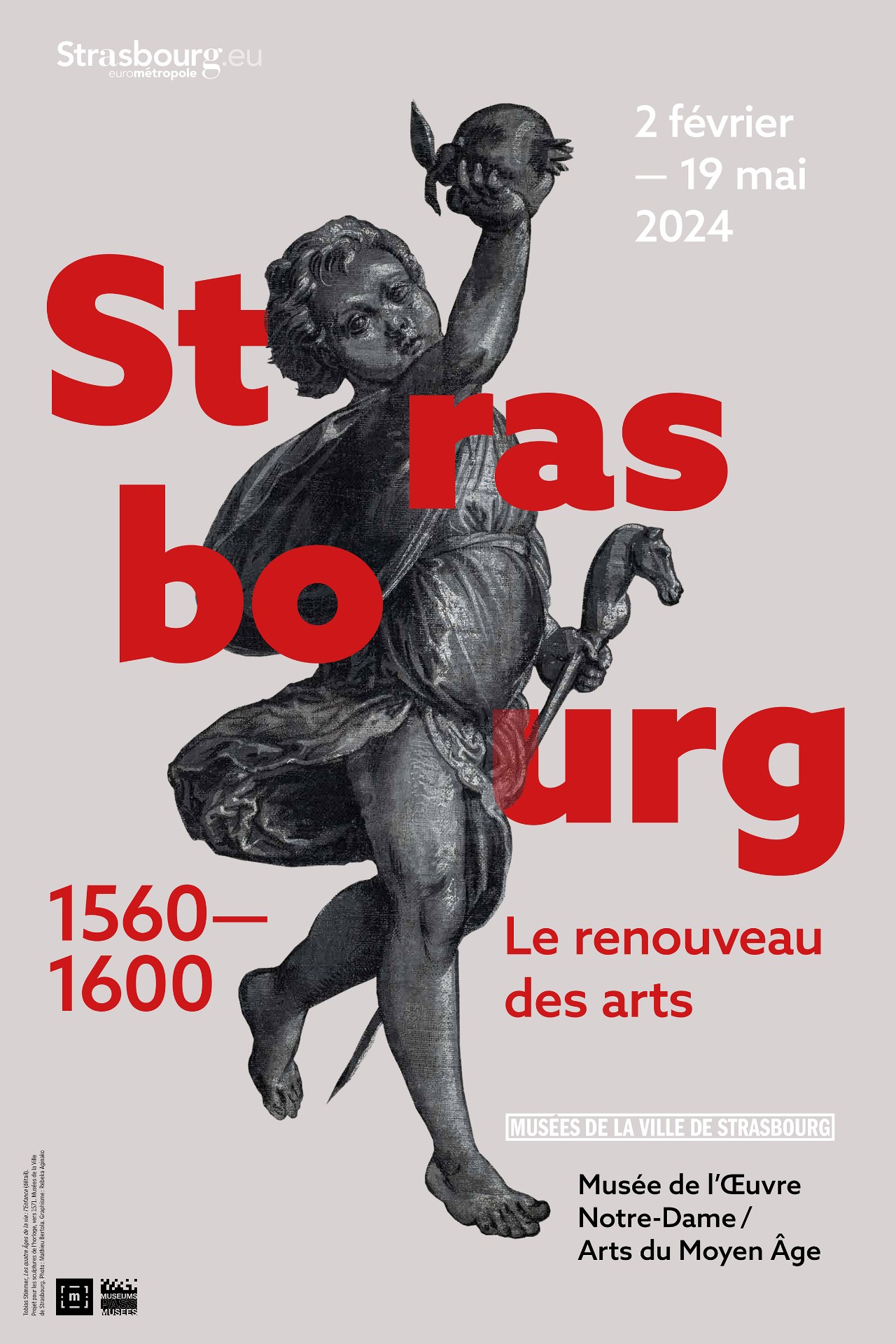Entête de page

Strasbourg 1560-1600. The renewal of the arts
2 February - 19 May 2024
Strasbourg 1560-1600. The renewal of the arts
In the closing years of the 16th century, Strasbourg became a noted artistic centre, its activity owing much to a favourable position in the centre of Europe. Whereas the onset of the Reformation had led to a decline in artistic activity, there now ensued a revival of the arts. This is a little known phase in the city's history, a large part of its output having disappeared or been dispersed. The exhibition centres on this ultimate phase of the Renaissance period, marked as it was by the spread of a new ornamental 'grammar', inspired by the antique canons, and its adoption by artists working in all disciplines.
At the same time, putting this phenomenon in a more general context allows us to discuss literary production and the vitality at this period of such fields as education, science and publishing. The most notable contribution to the revival was that of the two leading artistic figures who introduced the ornamental games of Mannerism to Strasbourg, both of them designers, engravers and painters of mural decorations.
- Tobias Stimmer (1539-1584), a prolific engraver from Schaffhausen, was also the designer of the decorations for a celebrated monument: the Cathedral's Astronomical Clock. His preparatory designs in grisaille on canvas for the Clock's sculptures (c.1571) have recently been restored and are here being presented to the public for the first time.
- In a more fanciful vein, we find the exuberant verve and decorative excess of the plates in the three volumes of the Architectura of Wendel Dietterlin (1551-1599), also known for his numerous mural paintings. Their influence was to persist until the Baroque period. The exhibition is being held within the museum itself, its buildings dating in part from the period in question. In this way, numerous sculptural and architectural features already present in the permanent display are shown to advantage, the works interacting much in the way imagined by the museum's founder Hans Haug.
The exhibition gives prominence to Tobias Stimmer's remarkable grisaille paintings, models for the Astronomical Clock's sculptures. These have been restored with the help of an endowment fund created by Dr. and Mme. Léon Crivain. The magnificent woodwork of the Oeuvre Notre-Dame Administrators' Room has also recently been restored through the patronage of the Society of Friends of the Arts and Museums of Strasbourg (SAAMS) and the Crédit Mutuel Bank.
Exhibition Curator: Cécile Dupeux, Chief Curator of the Musée de l’Œuvre Notre-Dame
